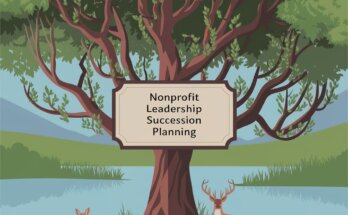In the ever-evolving landscape of the nonprofit sector, organizations often encounter unexpected challenges that can test their resilience. Whether it’s a sudden funding cut, a public relations disaster, or a global pandemic, understanding how to lead through nonprofit crises is crucial for survival and success.
This comprehensive guide will explore practical strategies and insights to help you navigate the tumultuous waters of crisis management in your nonprofit organization.
Understanding the Nature of Nonprofit Crises
Before we delve into the strategies, it’s essential to define what constitutes a nonprofit crisis.
A crisis can occur when an organization faces a significant disruption that threatens its mission, reputation, or operational stability.
These crises can stem from various sources, such as financial hardships, legal challenges, or even unforeseen events like natural disasters.
Consider a local nonprofit dedicated to feeding the hungry. When the pandemic hit, many of their funding sources evaporated overnight, forcing them to rethink their approach to service delivery.
This scenario highlights the need for effective crisis management strategies to ensure the organization’s continuity and impact.
1. Stay Calm and Assess the Situation
The first step in leading through a crisis is to stay calm. Your demeanor sets the tone for the entire organization. If you panic, your team will likely feel anxious and uncertain, which can hinder effective decision-making.
Practical Tip: Take a moment to breathe and gather your thoughts. Assess the situation by gathering information from reliable sources, understanding the extent of the crisis, and identifying the immediate needs.
Example:
When a nonprofit organization faced a scandal involving one of its board members, the executive director took a step back to assess the situation thoroughly before making any public statements.
This measured approach allowed her to craft a well-informed response, demonstrating leadership during a turbulent time.
2. Communicate Transparently
In any crisis, communication is key. Keeping your stakeholders informed about what’s happening and how the organization plans to respond can foster trust and loyalty.
Practical Tip: Utilize various communication channels to reach your audience. Send regular email updates, post on social media, and update your website with clear and concise information about the situation.
Example:
A nonprofit dedicated to environmental conservation faced backlash after a controversial project. Instead of remaining silent, they proactively communicated with their supporters through a series of email newsletters.
They explained the project’s goals, addressed concerns, and outlined steps taken to mitigate any negative impact. This transparency helped to regain trust among stakeholders.
3. Build a Crisis Management Team
Having a dedicated crisis management team in place is essential for navigating challenging times effectively. This team should consist of key personnel from different departments, ensuring a well-rounded approach to problem-solving.
Practical Tip: Identify individuals within your organization who have expertise in areas such as finance, communications, and program management. Assign specific roles and responsibilities to each team member.
Example:
During a major data breach, a nonprofit organization quickly assembled a crisis management team. The team included IT specialists to address the technical issues, communication experts to handle media inquiries, and financial officers to manage the budget implications.
This collaborative effort allowed the organization to respond swiftly and minimize damage.
4. Prioritize Mission-Driven Decision Making
In times of crisis, it’s crucial to stay focused on your mission. Decisions made during these times should align with the organization’s core values and long-term goals.
Practical Tip: Regularly remind your team of the organization’s mission and vision. When faced with difficult choices, ask how each option aligns with the mission.
Example:
A nonprofit providing educational resources faced a funding crisis that threatened to cut several key programs. Instead of eliminating services, the leadership team opted to launch a targeted fundraising campaign focused on their core mission.
This approach not only preserved essential programs but also engaged supporters who were passionate about the cause.
5. Empower Your Team
Crises can be overwhelming, but empowering your team can lead to innovative solutions and a sense of ownership. Encourage open communication and involve team members in decision-making processes.
Practical Tip: Host brainstorming sessions to gather ideas and perspectives from your team. Make it clear that everyone’s input is valued and that they play a vital role in navigating the crisis.
Example:
During a significant funding shortfall, a nonprofit leadership team held a series of open forums with staff to discuss potential strategies for revenue generation. By empowering employees to share their insights, the organization discovered new opportunities for partnerships and fundraising events that they hadn’t previously considered.
6. Assess Financial Stability
Financial challenges often arise during crises, making it essential to evaluate your organization’s financial health. Conduct a thorough analysis of your budget and identify areas where you can reduce costs without compromising your mission.
Practical Tip: Create a budget adjustment plan that outlines essential expenses and potential areas for cuts. Look for alternative funding sources, such as grants or community partnerships.
Example:
A nonprofit focused on mental health services faced a sudden loss of government funding. In response, the leadership team conducted a financial audit and identified non-essential expenses that could be temporarily eliminated. They also explored new grant opportunities, ultimately securing additional funding to maintain their critical programs.
7. Foster Community Engagement
Building strong relationships with your community can provide invaluable support during a crisis. Fostering community engagement can lead to increased collaboration and resource sharing.
Practical Tip: Engage with local businesses, community leaders, and other nonprofits to explore partnership opportunities. Collaborate on initiatives that align with your mission and leverage each other’s strengths.
Example:
A local animal shelter experienced a crisis when its facilities were damaged by a storm. The shelter reached out to the community for help, and local businesses stepped in to provide donations of food, supplies, and volunteer labor. By fostering community engagement, the shelter not only recovered from the crisis but also strengthened its relationships within the community.
8. Create a Crisis Response Plan
Every nonprofit should have a crisis response plan in place to guide actions during challenging times. This plan should outline protocols for communication, roles, and responsibilities, as well as resources available for support.
Practical Tip: Regularly review and update your crisis response plan. Conduct drills or simulations to ensure everyone knows their role when a crisis occurs.
Example:
A nonprofit dedicated to youth mentoring developed a crisis response plan that included procedures for addressing allegations of misconduct. When such an allegation arose, the organization was able to respond swiftly and effectively, maintaining trust with parents and the community.
9. Leverage Technology
In times of crisis, leveraging technology can help streamline operations and improve communication. Utilize digital tools to enhance your organization’s efficiency and adaptability.
Practical Tip: Invest in project management tools, online fundraising platforms, and communication software to facilitate collaboration and engagement among staff and stakeholders.
Example:
When a nonprofit focused on global health faced a sudden loss of funding, they quickly transitioned to virtual fundraising events using online platforms. This shift allowed them to reach a broader audience and maintain support during challenging times.
10. Reflect and Learn
After navigating a crisis, take time to reflect and learn from the experience. What worked well? What could have been improved? Conducting a post-crisis review can help your organization prepare for future challenges.
Example:
Following a successful recovery from a funding crisis, a nonprofit held a debriefing session to discuss what strategies were effective and which areas needed improvement. This reflective process not only strengthened the organization’s crisis management capabilities but also fostered a culture of continuous improvement.
A Story of Resilience: The Journey of “Bright Futures”
In a small town, the nonprofit organization Bright Futures had long been a beacon of hope, providing essential resources to low-income families. However, when the pandemic struck, their funding sources dried up, and they faced the possibility of closing their doors for good.
The executive director, Lisa, was determined to save the organization. She called an emergency meeting with her team and encouraged everyone to share their thoughts and ideas. One staff member suggested hosting a virtual community fundraiser, while another proposed partnering with local businesses for sponsorships.
Fueled by these ideas, Lisa and her team organized a virtual gala, complete with local entertainment and testimonials from families who had benefited from their programs. They promoted the event through social media and local radio stations, engaging the community in a way they never had before.
The event was a huge success, raising more than $50,000 and reinvigorating community support. Lisa’s calm leadership, transparent communication, and empowerment of her team turned a potential crisis into a remarkable opportunity for growth and engagement.
Take Action Now
Leading through nonprofit crises is undoubtedly challenging, but with the right strategies in place, your organization can not only survive but thrive.
If you found this guide helpful and want to access more expert tips, resources, job opportunities, grant opportunities, exclusive webinars, and events tailored for nonprofit leaders, we invite you to subscribe to the Nonprofit Navigators Newsletter.
Stay informed and equipped to lead your organization through any crisis that arises. Your leadership can make a lasting impact!
Additional Resources:
- The Small Business’s Guide to Winning Grants
- Request for Proposal Success: How to Write Proposals That Win
- The Ultimate Guide to Federal Grant Applications: Techniques for Success
- Digital Marketing for Nonprofits: A Comprehensive Guide to Boosting Your Impact Online
- Mastering Online Fundraising: A Nonprofit’s Guide to Digital Success




